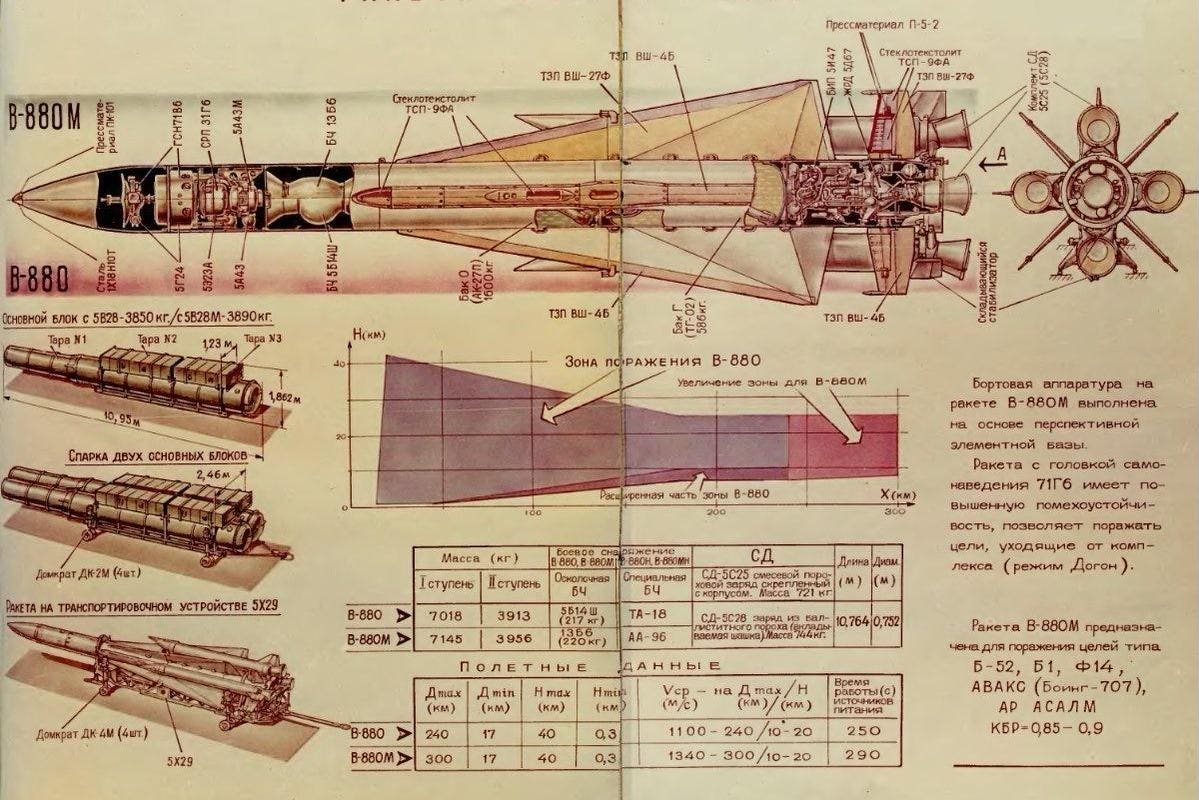It’s possible the Ukrainian air force is using obsolete S-200 surface-to-air missile systems as ground-attack weapons. If true, Kyiv may have a viable replacement for its dwindling stockpile of Tochka ballistic missiles—and a placeholder weapon as it awaits more modern long-range rockets from its allies.
A slow-motion video that circulated online on Sunday depicts what appears to be a V-860 or V-880 missile—the munition part of the overall S-200 system—smashing into the ground somewhere in Bryansk Oblast, just north of the Russian border with Ukraine.
There’s not yet any official confirmation of the S-200 conversion, but it’s not without precedent. Russian forces for a year now have been firing newer S-300 surface-to-air missiles at Ukrainian cities. In principle, there’s not a lot of difference between a surface-to-air missile and a surface-to-surface missile. And there are qualities of the S-200 that lend the SAM to the ground-attack role.
Soviet industry developed the S-200 in the 1960s in order to defend cities and military bases against American high-altitude bombers. It’s a gargantuan weapon. The V-860 and V-880 missiles are more than 30 feet long and weight eight tons on launch.
An S-200 battery’s launchers travel, slowly, along with Tall King and Square Pair radars on heavy tractor-trailers. The Tall King radar spots targets hundreds of miles away. The Square Pair keeps a lock on a target and sends signals to steer missiles toward a hit. The V-860/880’s 500-pound warhead scatters tens of thousands of ball-bearings in a lethal cloud.
In an air-defense role, an S-200 can hit targets as far away as 190 miles and as high as 130,000 feet. In a ground-attack role, its range should be even farther. The industrial site the apparent S-200 recently struck in Bryansk is around 110 miles from the Ukrainian border.
The distance itself is notable. “This was probably the most distance ever covered by a Ukrainian missile,” the independent Conflict Intelligence Team noted. “Only UAVs had previously reached that deep into Russian territory.”
The Russians apparently transformed their S-300s into surface-strike weapons with minimal modification by changing how the missile crews operate. Instead of relaying command guidance steering an outgoing missile toward an airborne target, the crews simply guide their munitions toward targets on the ground.
The S-200’s guidance system is powered by a tiny generator with its own separate fuel tank. The fuel capacity might not be adequate to guide a V-860/880 out to its theoretical maximum ground-attack range of nearly 250 miles. So it’s possible the Ukrainians instead have installed a tiny GPS seeker in the place of the command-guidance unit.
The S-200’s eight-ton missile is a potent munition. Its 500-pound warhead accounts for just a fraction of its destructive potential. Any fuel still in its tanks at the moment of impact would add an incendiary effect to its blast effect.
Just how many S-200s Ukraine might have at its disposal is unclear. The Ukrainian air force operated the crude missile until around 2013. There could be hundreds of old V-860/880s in storage in Ukraine, and hundreds more in the arsenals of Kyiv’s ex-Warsaw Pact allies.
The 60-year-old S-200 might not be as accurate as, say, an American-made Army Tactical Missile System is. But it strikes just as far. And more importantly, it’s available. While Kyiv waits for the administration of U.S. president Joe Biden to sign off on a long-anticipated transfer of ATACMs, it makes do.
To pluck at Russian bases and supply lines or Russian soil near Ukraine, the Ukrainians now bring to bear: British-made, air-launched Storm Shadow cruise missiles; a growing fleet of small, long-range drones; a shrinking arsenal of 70-mile range Tochka rockets; and, quite possibly, the modified S-200s.
Read the full article here





